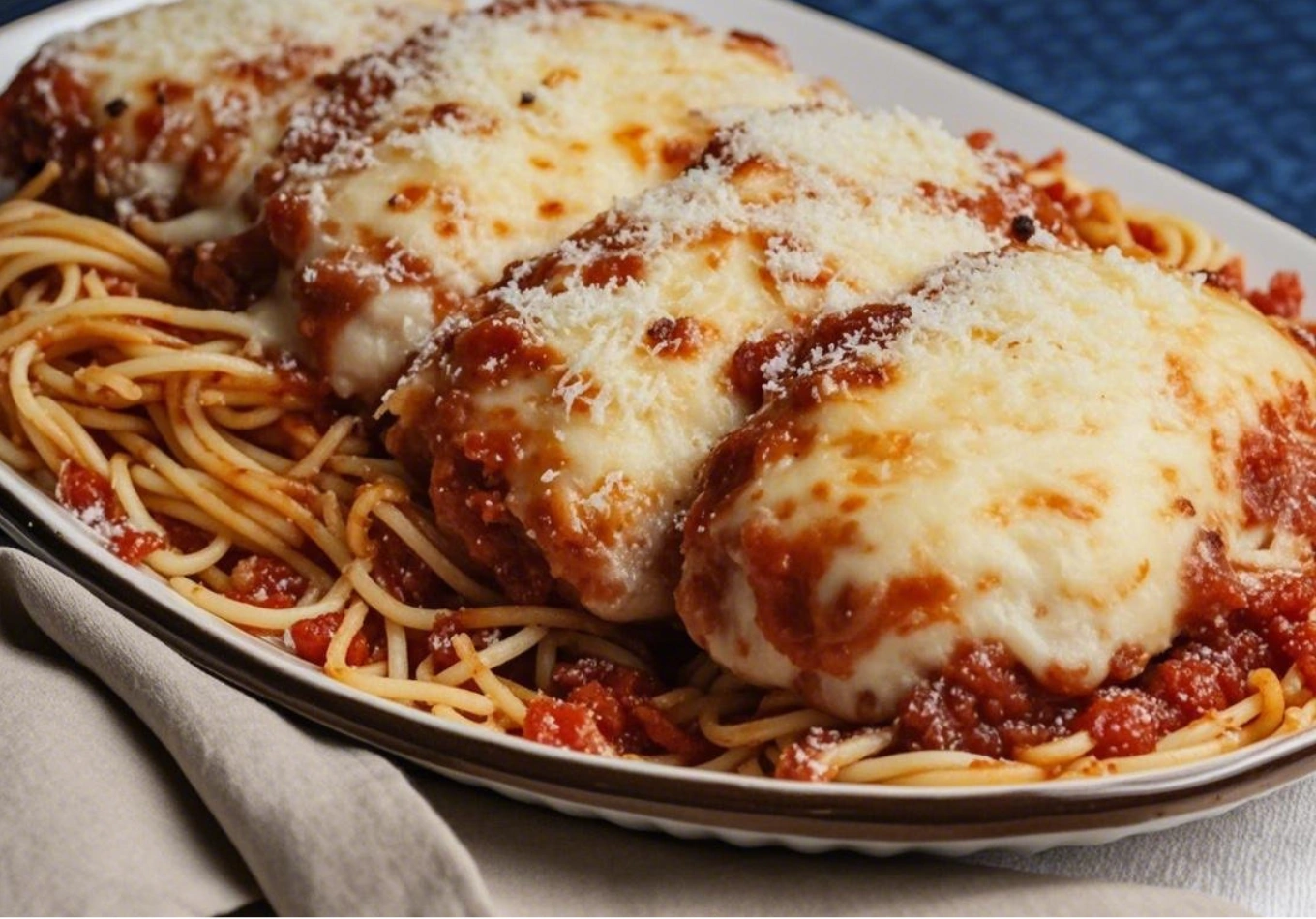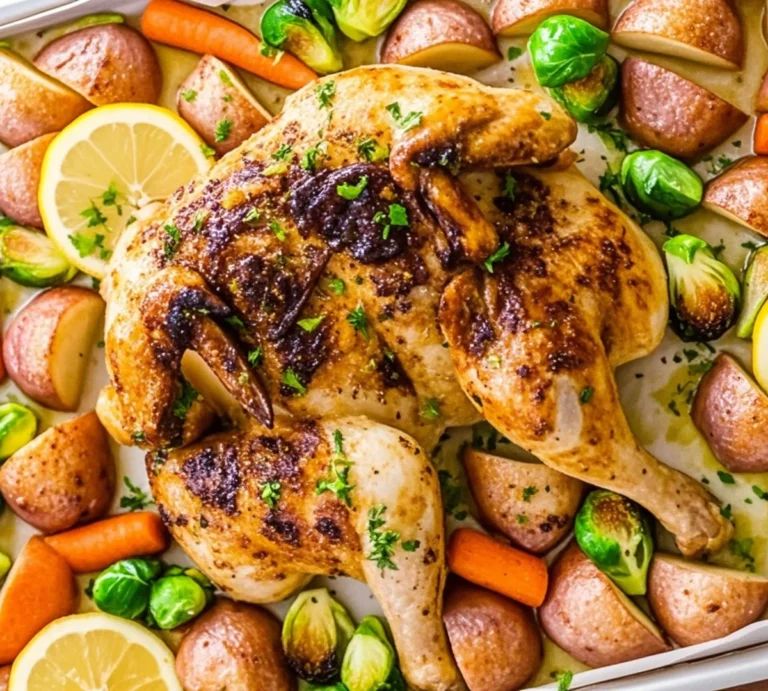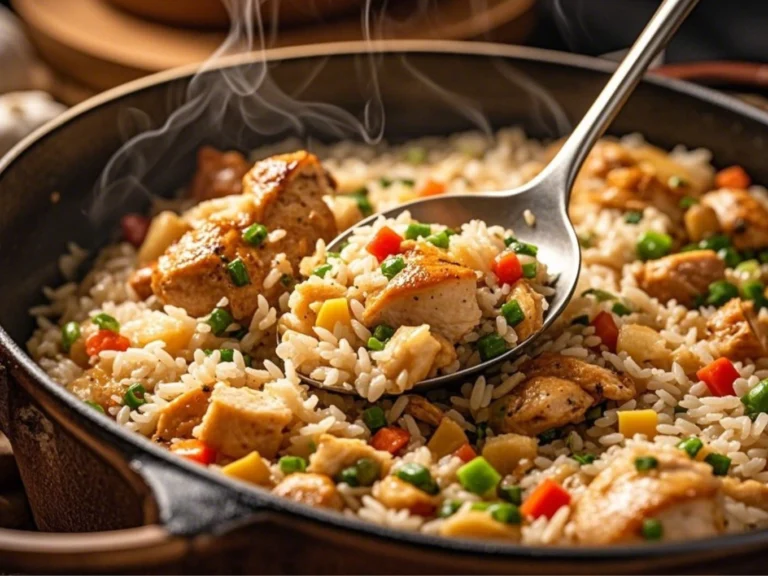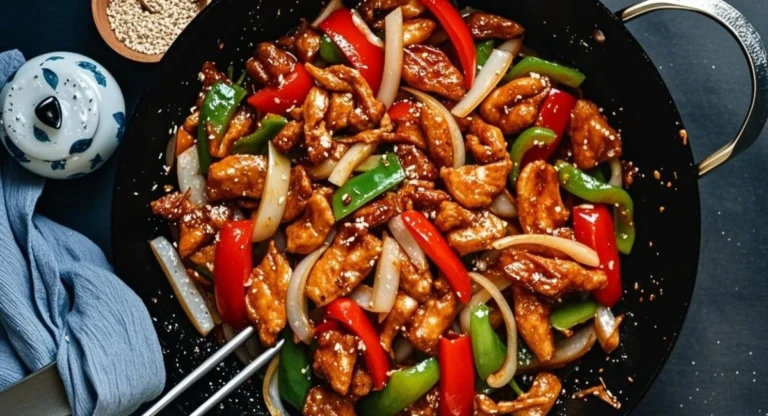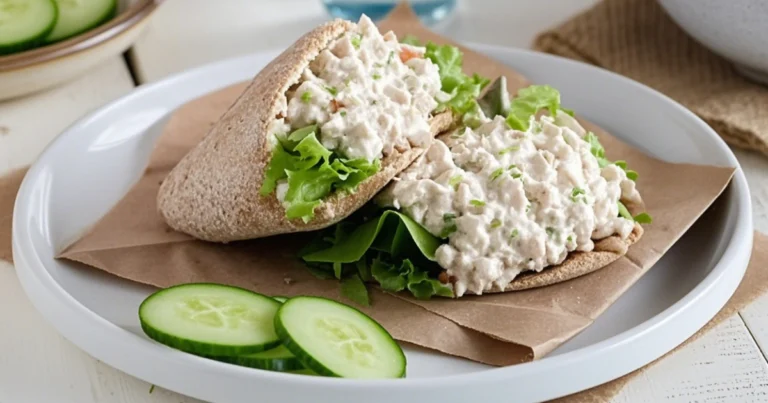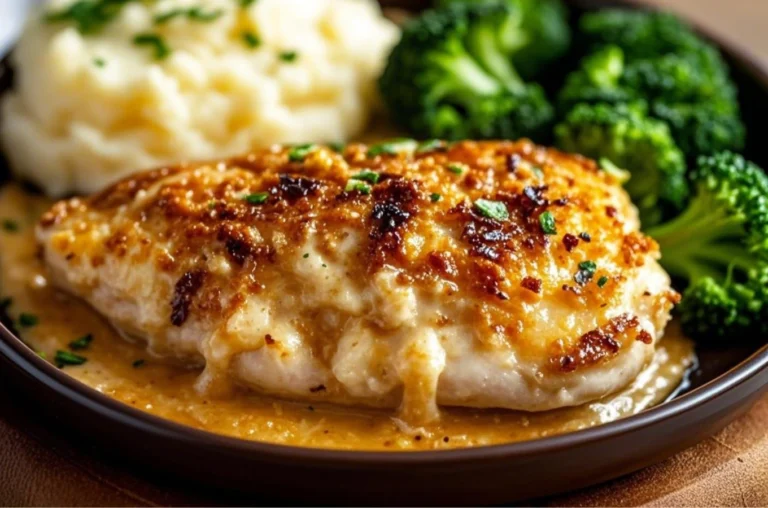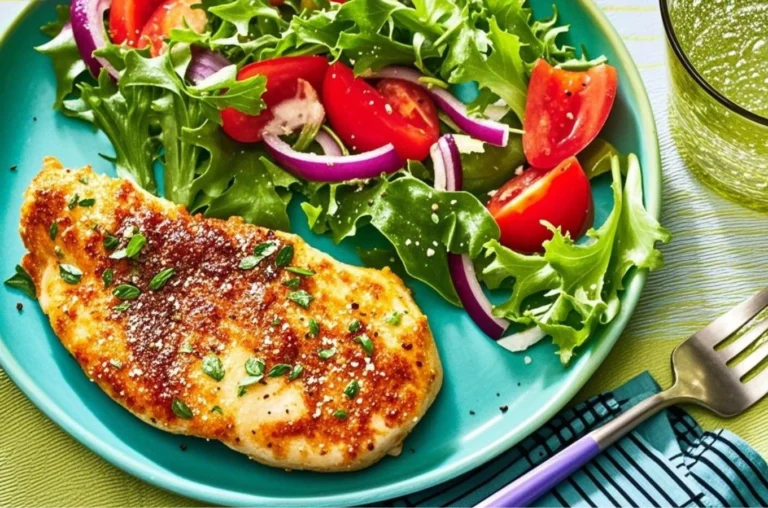The Ultimate Chicken And Parmesan Cheese Recipe: Crispy, Cheesy Perfection Every Time
Table of Contents
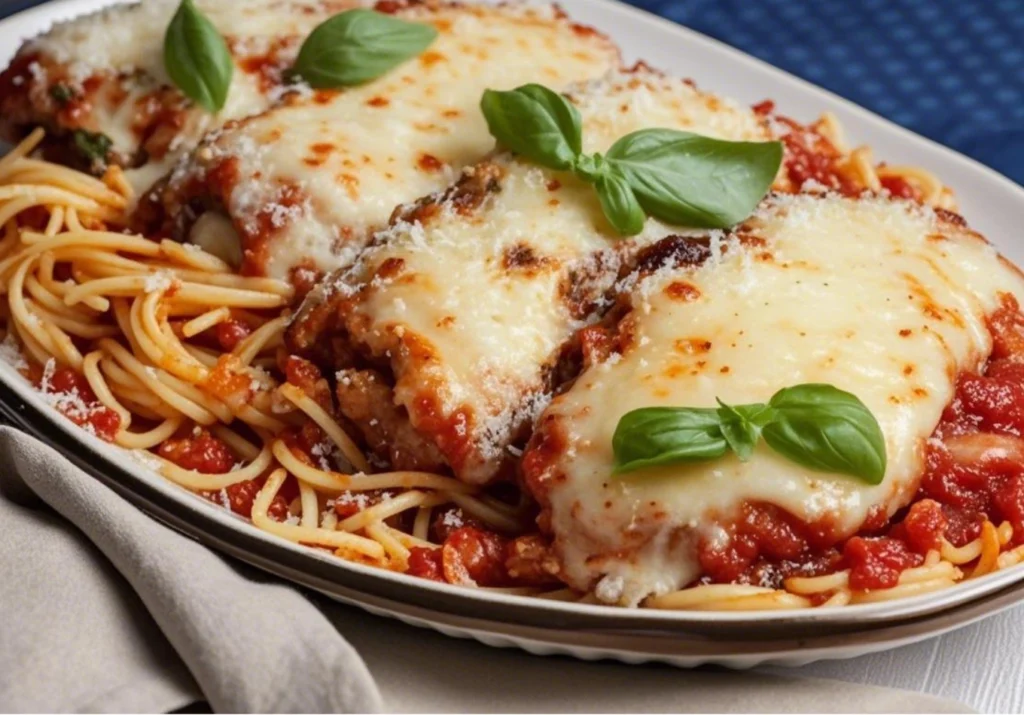
What Makes This Parmesan Crusted Chicken And Parmesan Special
When comparing homemade Chicken And Parmesan to restaurant versions, you’ll notice significant differences that elevate your culinary creation. The secret lies in balancing authentic techniques with practical time-saving methods suitable for busy households. Your homemade version stands out through several distinctive qualities that restaurant versions simply cannot match.
First, the double-coating technique ensures maximum crispiness that withstands the addition of sauce and cheese without turning soggy. This critical step creates that distinctive crunch that defines exceptional Chicken And Parmesan. Additionally, achieving the perfect cheese-to-sauce ratio delivers balanced flavor in every bite – something often missed in commercial kitchens rushing through preparations.
For families juggling busy schedules, this recipe includes make-ahead options for Healthier Family Meals planning. The components can be prepared separately and assembled just before baking, ensuring fresh-tasting results even on hectic weeknights. The recipe also features simple substitutions for dietary restrictions without sacrificing the authentic taste that makes this dish a perennial favorite.
The History Behind This Italian-American Classic
The journey of Chicken And Parmesann from Italian roots to American tables tells a fascinating culinary story. Contrary to popular belief, traditional Italian cuisine never featured Chicken And Parmesan – its ancestor was eggplant parmigiana (melanzane alla parmigiana), a dish originating in southern Italy that showcased local produce and cheese.
When Italian immigrants arrived in America during the late 19th and early 20th centuries, they discovered abundant and affordable meat compared to their homeland. This newfound prosperity led creative cooks to adapt traditional recipes, substituting thinly pounded chicken for eggplant while maintaining the familiar combination of tomato sauce and cheese.
This transformation occurred primarily in Italian-American communities, where the dish evolved to incorporate American ingredients and tastes. By the mid-20th century, Chicken And Parmesan had secured its place as a comfort food staple in homes and restaurants across the country. The combination of protein, satisfying breading, tangy sauce, and melted cheese perfectly suited American palates while maintaining connections to Italian culinary heritage.
Modern home cooks continue this tradition of adaptation, creating variations tailored to contemporary preferences and needs. This versatility explains why Chicken And Parmesan remains one of America’s most beloved Home Cooked Dinner Ideas across generations.
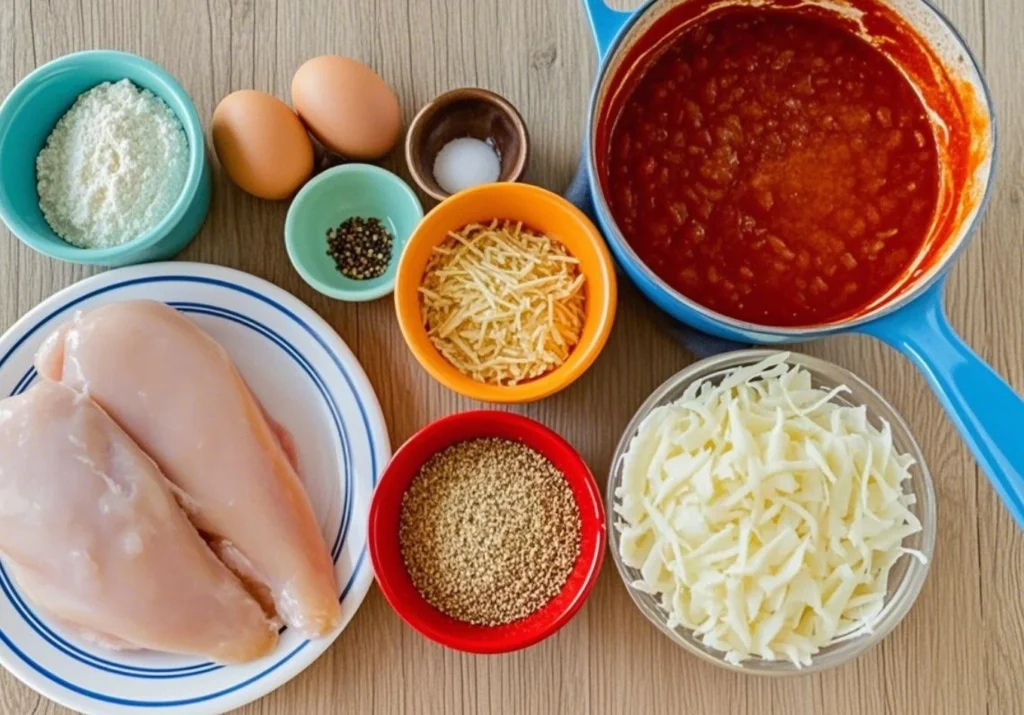
Essential Ingredients for the Best Chicken And Veggie Dinner
Choosing Quality Components
The secret to extraordinary Chicken And Parmesan begins with selecting premium ingredients. Each component contributes distinctive flavors and textures that elevate your finished dish from good to memorable.
| Ingredient | Recommended Type | Why It Matters |
|---|---|---|
| Chicken breasts | Organic, air-chilled | Better texture, no added water that dilutes flavor and creates steam |
| Parmesan cheese | Parmigiano-Reggiano, freshly grated | Complex flavor profile unmatched by pre-grated versions |
| Mozzarella | Low-moisture, whole milk | Melts beautifully without releasing excess liquid onto your crispy coating |
| Breadcrumbs | Panko + Italian seasoned | Creates perfect texture combination – airy crunch with aromatic herbs |
| Tomato sauce | San Marzano tomatoes or quality jarred | Provides balanced sweetness and acidity without requiring additional sugar |
| Fresh herbs | Basil, oregano, parsley | Adds brightness and aromatic complexity missing from dried alternatives |
| Olive oil | Extra virgin | Delivers clean, fruity flavor for both cooking and finishing |
| Side vegetables | Seasonal options | Completes your Best Chicken And Veggie Dinner with nutritional balance |
While budget constraints might tempt you toward less expensive alternatives, certain components genuinely impact your final results. Authentic Parmigiano-Reggiano, though pricier than domestic alternatives, delivers incomparable depth of flavor through its aging process. Similarly, fresh herbs provide aromatic notes that dried versions simply cannot match.
For accompanying vegetables that transform this classic into a complete Best Chicken And Veggie Dinner, consider seasonal options that complement the richness of the main dish. Roasted asparagus, sautéed broccolini, or a bright arugula salad creates textural contrast while adding nutritional value.
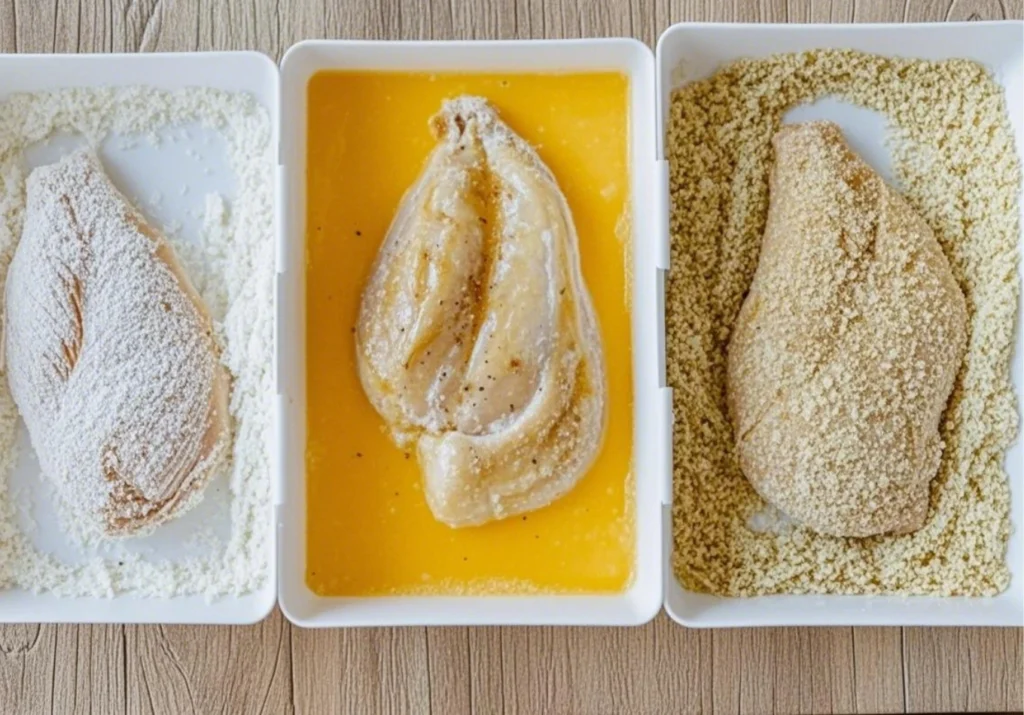
Step-by-Step Preparation Method for Perfect Parmesan Crusted Chicken And Parmesan
Preparing the Chicken
Beginning with properly prepared chicken ensures even cooking and tender results. Follow these critical steps before applying your coating:
- Butterfly and pound chicken breasts to even thickness (approximately ¼ inch) using a meat tenderizer or heavy skillet. This uniform thickness prevents dry edges while waiting for thicker sections to cook through.
- Season generously with salt and pepper on both sides, remembering that proper seasoning at each stage builds flavor throughout the dish.
- Allow chicken to rest at room temperature for 15 minutes before coating. This crucial step ensures even cooking by taking the chill off refrigerated meat.
- Pat dry thoroughly with paper towels before breading. Removing surface moisture helps your coating adhere properly and prevents steaming that leads to soggy results.
These preparation steps might seem minor, but they dramatically impact your final texture and flavor. Professional kitchens recognize that proper preparation of proteins before cooking makes the difference between average and exceptional results.
The Foolproof Breading Technique
Creating that perfect crust stands as the defining characteristic of authentic Parmesan Crusted Chicken And Parmesan. The three-step breading process requires attention to detail but delivers unmatched results:
- Set up your breading station with three shallow dishes containing: all-purpose flour, beaten eggs (with a splash of milk), and your breadcrumb mixture.
- Coat each breast in flour, shaking off excess. This initial layer creates a dry surface for egg to adhere to.
- Dip in egg wash, allowing excess to drip off. The egg provides the “glue” that holds your breadcrumbs in place.
- Press firmly into breadcrumb mixture containing:
- Panko breadcrumbs for exceptional crispiness
- Italian seasoned breadcrumbs for flavor depth
- Freshly grated Parmesan cheese (approximately ¼ cup per cup of breadcrumbs)
- Dried Italian herbs (oregano, basil, thyme)
- Garlic powder for savory notes without burning
- Rest breaded chicken for 5 minutes before cooking – a crucial step most recipes overlook! This brief waiting period allows the coating to adhere more securely, preventing it from slipping off during cooking.
This methodical approach creates a coating that remains crisp even after sauce and cheese application. The combination of breadcrumb types provides both flavor and texture advantages that single-breadcrumb recipes miss.
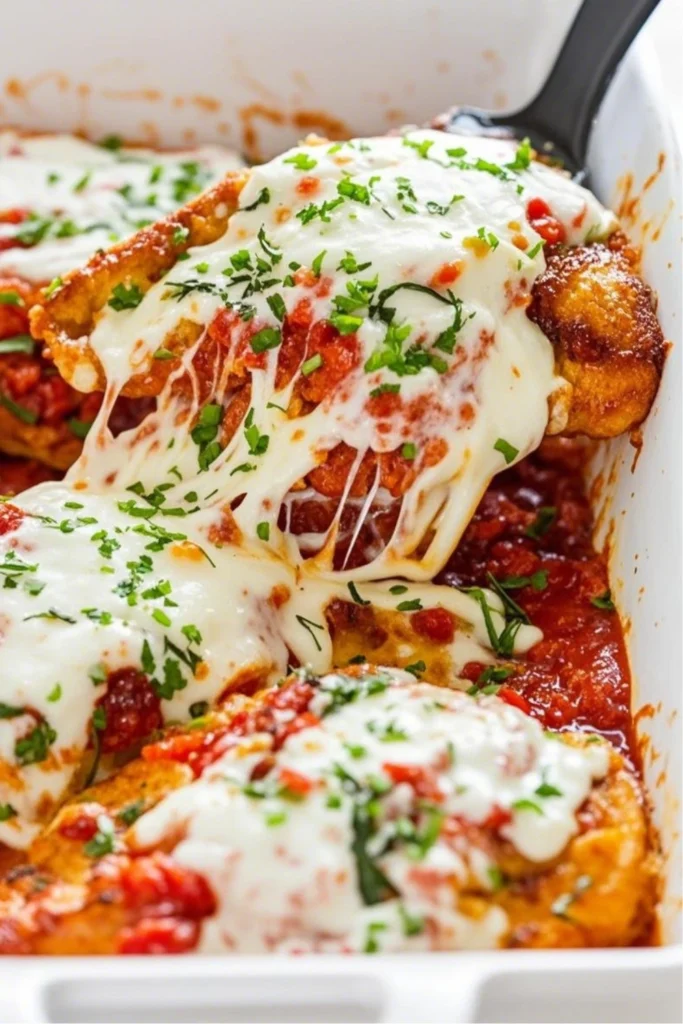
Cooking Methods: Frying vs. Baking
The Traditional Pan-Frying Method
For authentic results with maximum crispiness, pan-frying remains the gold standard cooking method. Follow these steps for perfect results:
Heat ½ inch of high-quality olive oil in a heavy skillet until shimmering but not smoking (approximately 350°F). Working in batches to prevent overcrowding, carefully place breaded chicken into the oil. Overcrowding causes temperature drops that result in oil absorption rather than proper frying.
Cook 3-4 minutes per side until golden brown and internal temperature reaches 165°F. Transfer to a paper towel-lined plate to drain excess oil. The ideal result features an evenly browned exterior with no raw flour spots.
Healthier Oven-Baked Version
For those pursuing Healthier Family Meals without sacrificing flavor, this baked alternative delivers impressive results:
Preheat your oven to 425°F and place a wire rack on a baking sheet. Spray or brush both the rack and breaded chicken with olive oil. Bake for 15-18 minutes until golden and crisp, flipping halfway through cooking.
The elevated position on the rack allows air circulation that crisps the bottom surface – eliminating the soggy bottom that plagues many baked versions. While slightly less crisp than fried, this method reduces oil considerably while maintaining flavor integrity.
Building The Perfect Chicken And Parmesan Cheese Stack
Sauce Selection and Application
The sauce component balances the richness of cheese and provides moisture without compromising your perfectly crisp coating. Homemade sauce offers flavor control, but quality store-bought varieties provide convenience without significant compromise.
When making homemade sauce, San Marzano tomatoes deliver natural sweetness without added sugar. Key aromatics including onion, garlic, and fresh basil create depth, while a splash of good red wine contributes complexity. Allow sauce to simmer until slightly thickened, approximately 25-30 minutes.
For sauce application, moderation proves essential. A scant ¼ cup per chicken breast provides flavor without flooding your creation. Spoon sauce down the center of each piece, leaving approximately ½-inch perimeter of visible breading. This technique maintains edge crispness while providing adequate sauce in every bite.
The Cheese Layer: Creating the Perfect Melt
The defining visual characteristic of Chicken And Parmesan Cheese comes from its beautifully melted cheese layer. Rather than piling on excessive cheese, strategic application delivers better results:
Begin with a light dusting of freshly grated Parmesan directly on the sauce. This initial layer adds saltiness that enhances other flavors. Next, apply approximately 2-3 tablespoons of shredded low-moisture mozzarella over each piece, focusing more toward the center and less toward edges.
For the perfect melt, place assembled chicken under a preheated broiler for 2-3 minutes, watching carefully to prevent burning. The ideal result features bubbling, lightly browned cheese with small caramelized spots adding flavor complexity.
Some traditionalists include sliced provolone between the mozzarella and Parmesan for additional flavor nuance. This optional addition creates a more complex cheese profile that complements the acidic tomato sauce.
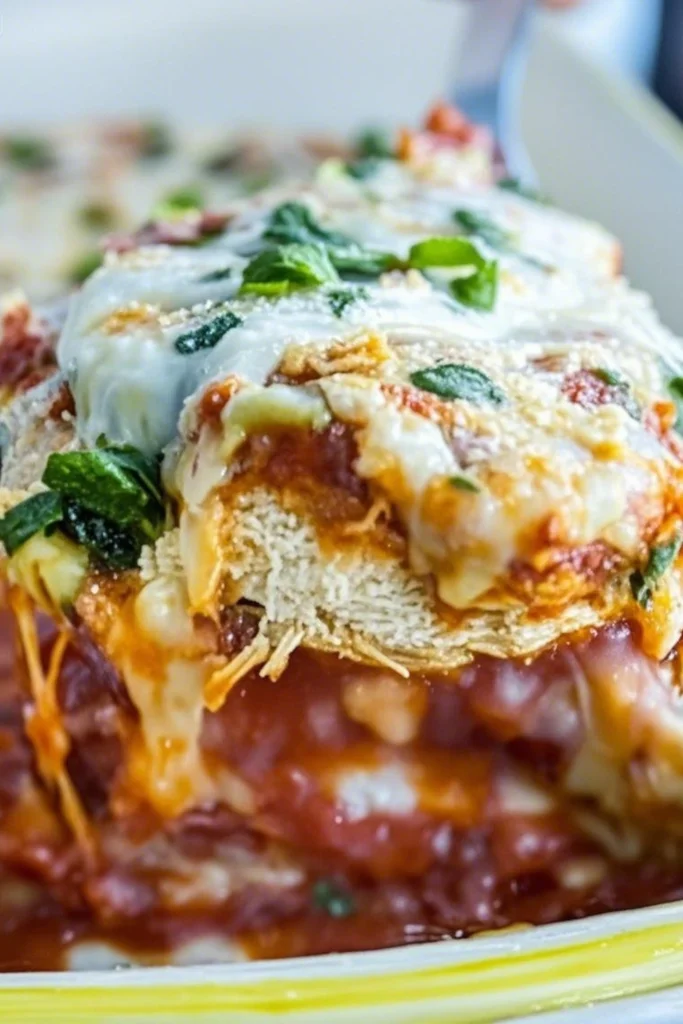
Serving Suggestions: Complete Your Best Chicken And Veggie Dinner
Traditional and Modern Side Dishes
While Chicken And Parmesan traditionally pairs with pasta, contemporary serving options expand its versatility for various dining situations:
Pasta Partnerships: Select pasta shapes that capture sauce effectively – linguine, fettuccine, or rigatoni outperform smoother shapes. Cook pasta just shy of al dente, as it continues cooking when tossed with hot sauce. Reserve ¼ cup pasta cooking water to silk your sauce if needed.
Vegetable Complements: Transform your creation into a Best Chicken And Veggie Dinner by incorporating colorful, seasonal vegetables. Roasted Mediterranean vegetables including zucchini, bell peppers, and cherry tomatoes provide complementary flavors. For winter months, roasted root vegetables offer satisfying alternatives.
Fresh Accompaniments: A bright arugula salad dressed simply with lemon juice, olive oil, and shaved Parmesan balances the dish’s richness. For summer meals, a tomato-cucumber salad with fresh basil echoes flavors in the main dish while adding refreshing contrast.
Bread Selections: Crusty Italian bread or garlic bread provides the perfect tool for capturing extra sauce. Avoid overly dense bread varieties that compete with rather than complement your meal.
Wine and Beverage Pairings
The right beverage elevates this classic to new heights. While Italian wines naturally complement this cuisine, several options suit various preferences:
For red wine enthusiasts, medium-bodied options with moderate acidity cut through richness without overwhelming flavor. Chianti Classico, Barbera, and American Zinfandel provide excellent matches. White wine drinkers might select an unoaked Chardonnay or crisp Pinot Grigio that stands up to the dish without competition.
Beer alternatives include amber ales or Vienna lagers that offer maltiness to complement the breading while providing enough carbonation to refresh the palate. For non-alcoholic pairings, sparkling water with lemon or blood orange Italian sodas create festive alternatives.
Make-Ahead Tips and Storage for Healthier Family Meals Planning
Meal Prep Strategies
Strategic preparation transforms this seemingly complex dish into a weeknight possibility. Components prepared in advance significantly reduce day-of cooking time:
Prepare and bread chicken up to 24 hours ahead, storing covered in the refrigerator with parchment paper between layers. Sauce can be made up to three days in advance, improving flavor as it rests. Grate cheese mixtures ahead and store in sealed containers.
For ultimate convenience, prepare fully cooked chicken cutlets without sauce or cheese over the weekend. Refrigerate for quick assembly during the week, or freeze between parchment sheets for longer storage.
These preparation strategies support Healthier Family Meals planning by making homemade options accessible even during busy periods when takeout temptations arise.
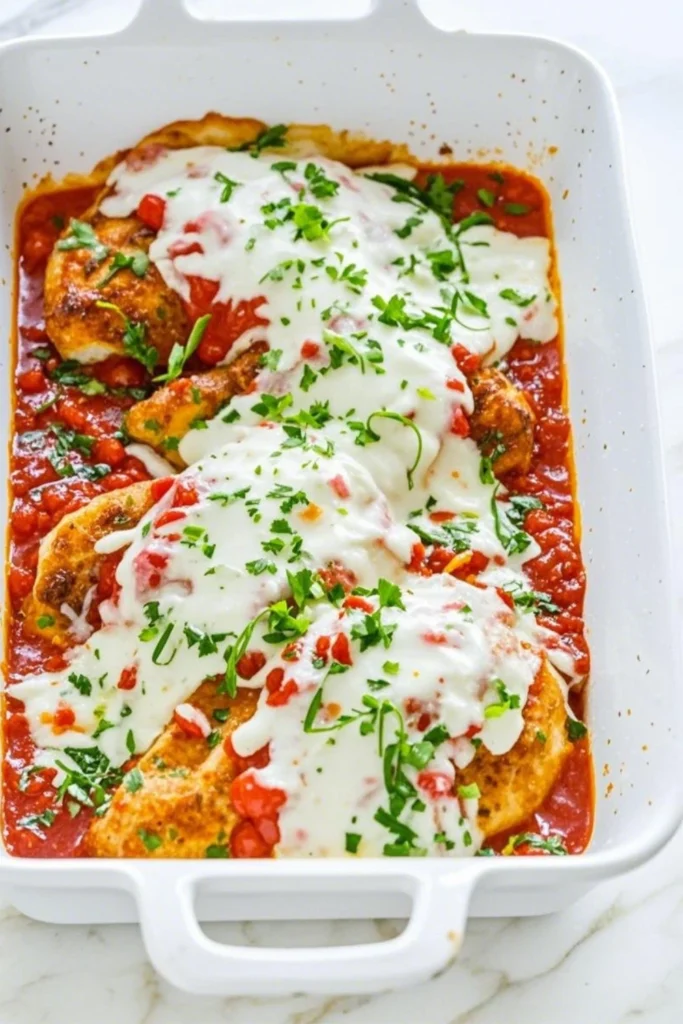
Proper Storage and Reheating
Proper storage techniques maintain quality and food safety for leftover enjoyment:
Refrigerate leftovers within two hours of cooking, storing components separately when possible – keeping chicken separate from sauce extends crispiness. Properly stored leftovers remain fresh for up to three days.
When reheating, avoid microwaves that create steam and soggy results. Instead, place chicken on a baking sheet in a 350°F oven for 10-15 minutes until heated through, adding sauce and cheese during the final minutes. This method restores crispiness while ensuring food safety.
For freezing, wrap fully cooled, fried chicken (without sauce or cheese) tightly in plastic wrap followed by aluminum foil. Freeze sauce separately in airtight containers. Frozen components maintain quality for up to three months.
Variations to Try: Beyond Basic Parmesan Crusted Chicken And Parmesan
Dietary Adaptations
Dietary restrictions needn’t prevent enjoyment of this classic. Consider these modifications for specific needs:
Gluten-Free Version: Substitute regular flour with rice flour for dredging, and use gluten-free panko breadcrumbs. Verify that your selected Italian seasoning blend contains no gluten-containing additives.
Dairy-Free Alternatives: Plant-based cheese alternatives have improved dramatically. Select versions specifically designed for melting, usually cashew or tapioca based. Nutritional yeast adds umami notes to dairy-free breadcrumbs.
Lower-Calorie Options: Beyond the baking method mentioned earlier, consider using chicken tenders which require less breading, reducing overall calories. Supplement with additional vegetables to maintain satisfying portion sizes while decreasing caloric density.
These adaptations ensure everyone at your table enjoys this comfort classic regardless of dietary considerations.
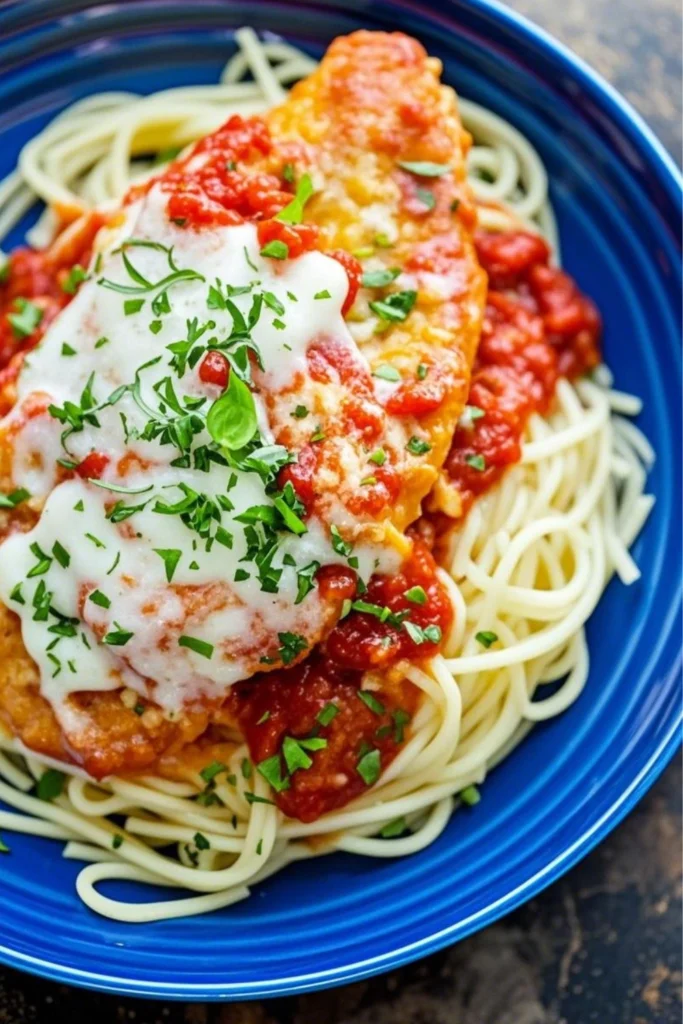
Conclusion: Mastering Chicken And Parmesan Cheese at Home
Perfecting Parmesan Crusted Chicken And Parmesan delivers more than just a delicious meal – it provides a connection to culinary tradition while creating new family memories around your table. The techniques shared here transform this restaurant favorite into an achievable home cooking triumph, even for those with limited experience.
Beyond technique, this dish offers versatility that accommodates busy schedules, dietary needs, and creative interpretations. Whether preparing a romantic dinner, feeding a hungry family, or impressing weekend guests, this Best Chicken And Veggie Dinner adaptation suits countless occasions.
We’d love to see your creations! Share photos of your Chicken And Parmesan Cheese masterpieces on social media with #HomemadeChickenParm. Your success inspires others to bring this classic to their own tables, continuing the tradition of exceptional Home Cooked Dinner Ideas that nurture both body and soul.
FAQ: Everything You Need to Know About Parmesan Crusted Chicken And Parmesan
Q: Can I make Chicken And Parmesan Cheese ahead of time? A: Absolutely! You can bread the chicken up to 24 hours in advance, storing it covered in the refrigerator. For best results, fry or bake just before serving. The sauce actually improves with time and can be made up to three days ahead.
Q: How do I keep my Parmesan Crusted Chicken And Parmesan from getting soggy? A: Several techniques prevent sogginess: First, thoroughly pat chicken dry before breading. Second, allow breaded chicken to rest before cooking. Third, apply sauce sparingly, leaving edges exposed. Finally, add sauce and cheese only during final cooking stages rather than letting them sit on the chicken for extended periods.
Q: What’s the best cheese to use for authentic Chicken And Parmesan Cheese? A: The gold standard combination includes freshly grated Parmigiano-Reggiano (not the shelf-stable version in shaker containers) for flavor depth and low-moisture mozzarella for optimal melting properties. For additional complexity, some chefs add a layer of provolone between these two cheeses.
Q: Can this Parmesan Crusted Chicken And Parmesan recipe be made gluten-free? A: Yes! Substitute regular flour with rice flour for the initial dredging step. Replace traditional breadcrumbs with gluten-free varieties – both panko and Italian-style versions are now widely available. Always verify that your seasonings contain no gluten-containing fillers or additives.

